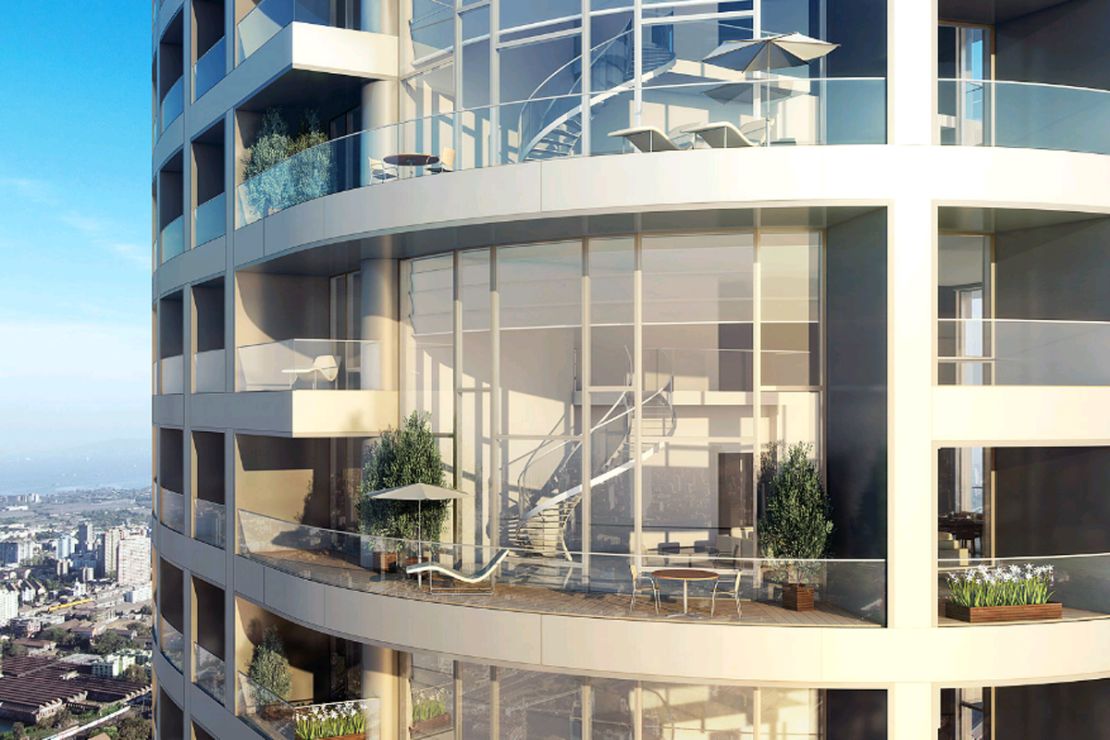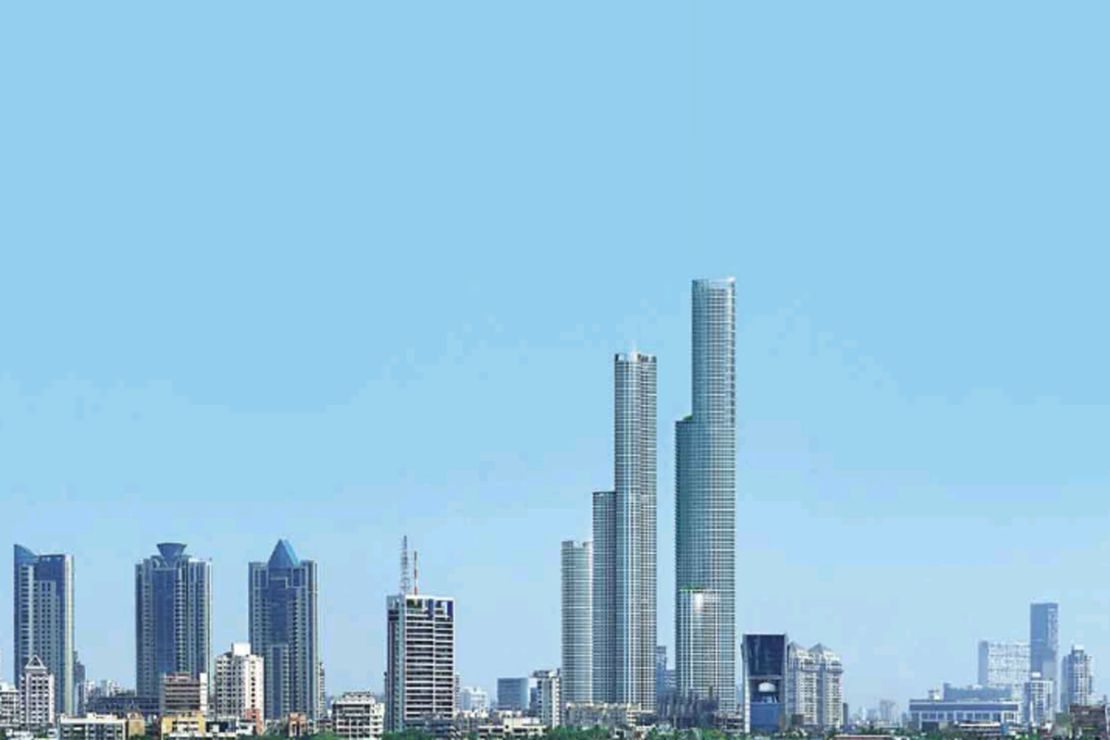Editor’s Note: One Square Meter explores the leading architectural designs, city plans and demand for property investment in emerging markets. Join CNN’s John Defterios as he visits some of the world’s most dynamic cities for an insight into the fast-paced world of real estate development.
From December 17, watch the show on CNN every Tuesday during Global Exchange.
Story highlights
The World One building in Mumbai will be one of the world's tallest residential towers
Luxury property prices in the Indian city are almost on par with many cities in the developed world
Ambitious developers see opportunities to create new communities in Mumbai's suburbs
In Mumbai, the spiritual home of Bollywood stars and starlets, a sparkling new icon is on the rise.
Stretching fully 442 meters (1,450 feet) above the Indian city’s busy financial district and playing host to some 300 high-class apartments, the World One tower will become one of the world’s tallest residential buildings anywhere when completed in 2014.
According to Abhinandan Lodha, deputy managing director of the Lodha Group (the real estate company behind the project) the giant structure is a symbol of the rapid development that has transformed Mumbai into a vibrant, modern destination in recent years.
See also: China’s crazy property bubble
“When you go to Dubai you see the Burj. New York, (the) Empire State and so on. But Mumbai didn’t have a similar landmark like that which identified the city as being the next financial center of a global nation,” Lodha said.
“World One is our way to contribute in a different way, to say that we are globally on the map as India, globally on the map as Mumbai,” he added.
Mumbai’s new foundations

Lodha and his organization represent a new breed of high-class property developers reshaping the very foundations of Mumbai.
The company has 40 projects currently in the works across the fast changing metropolis where luxury flats are trading for as high as $8,000 per square meter and luxury villas at $12,000 per square meter.
These costly sums put Mumbai in the same league as some of the most expensive cities in the developed world and equate to “about 70% of residential prices compared to midtown Manhattan,” explained Anuj Puri, chairman of real estate specialists Jones Lang LaSalle India. “Compared to St Johns Wood in London it is about 80% and to Happy Valley in Hong Kong it is about 90%,” he added.
But while rising luxury property prices equals good news for those with the means to snap-up an early deal, the investing class represents just a tiny fraction of the 20 million Indians that call Mumbai home.
The vast majority live in far more modestly priced housing or travel from far outside to work in the city. With real estate and rents booming in downtown areas, however, many of Mumbai’s factories and employers are relocating to sites on the city’s outskirts.
See also: UK moves to cool property market
This is a trend recognized by Sarath Chandran from the Committee for the Right to Housing who mourns the fact that an increasing number of the city’s inhabitants are now being forced to travel for hours to reach their places of work.
“All the companies in Mumbai are there but the only thing is they have shifted their manufacturing from inner Mumbai to outer Mumbai,” she said.
Cities in the suburbs

Out of this altering landscape, however, some see the opportunity to reshape Mumbai even further.
The Lodha Group is behind plans to develop entire new towns from scratch on the outskirts of Mumbai to meet the changing needs and demography of the city.
One such development is Palava, a 16 square kilometer city that will offer schools, hospitals, its own police force and fire stations for 80,000 people.
“There is a real case for saying that someone needs to come together and say we are going to house industry in the way that it creates long term benefits for both the people living in it and for the city,” said Lodha.
“(This) can only happen if you look at it from a 20 year perspective which can happen only towards the suburban areas of Mumbai.”
See also: Is property boom about to bust?
Eager property investors such as Lionel Lobo agree. He bought four units in Palava for himself and his family in 2010 at a cost of $300 per square meter. Today the same space sells for $750 per square meter, a doubling of his initial investment in just three years.
But for a new generation of Indian home-buyers like, Lobo it’s not all about the value of the returns.
“They have found this place is a nice place for the next generation and their wives and elders,” he says.
Eoghan Macguire contributed to this report








